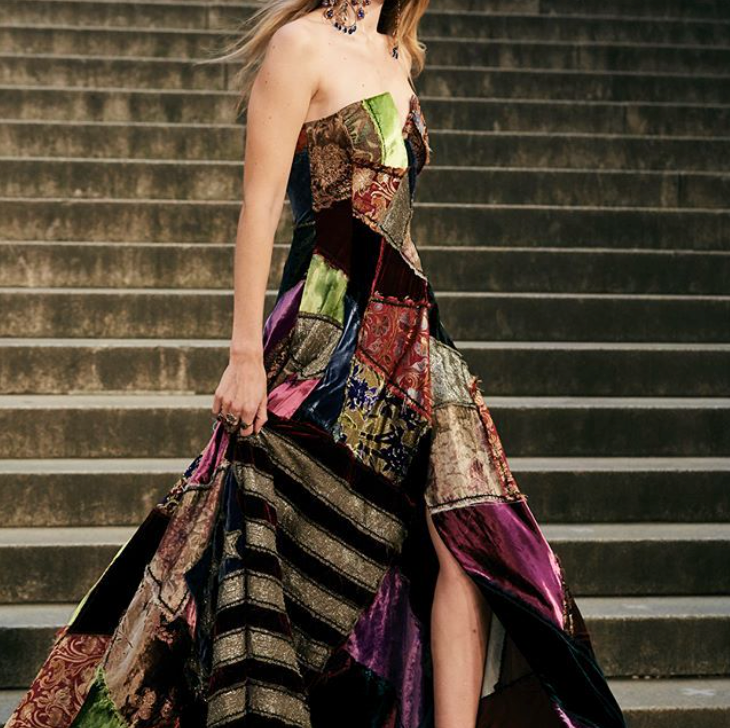
The History of Sustainable Fashion
The History of Sustainable Fashion by Morgan Watkins
With our planet warming and our landfills piling up all across the globe, talks of sustainable living has made room for itself at the dinner table in fashion society. The ever-booming business of fast fashion and the consumer attitude of obsessive excess has projected fashion in a negative light with regards going green initiatives. But many brands and designers are putting their foot down for a future that is as eco-friendly as it is fabulous. Read on to learn about the origins of green fashion and how industry giants are working towards a better, cleaner future.
Back in ancient times, civilizations relied entirely on natural materials to construct their clothing. Garments were commonly made of animal hides, skins, furs and bones in order to utilize every part of the creatures they hunted. Leaves and twigs were other resources widely used to clothe individuals, until the practice of weaving came around in Egypt around 3400 B.C. Since then, a multitude of fabrics have been created from both natural and synthetic goods. Common examples of natural fabrics would be cotton and silk, which are characteristically better for the environment as they are made from products that will likely break down over time. Even so, some of these fabrics are treated with harmful chemicals, making them toxic for the environment. Synthetic textiles, which were first introduced in the late 19th century, are harmful to the planet due to their resistance to decompose; think nylon, acrylic and polyester.

(Image from http://www.experience-ancient-egypt.com/ancient-egyptian-culture/ancient-egyptian-life/ ancient-egyptian-clothes)
So when did the production of clothing become an environmental hazard? Let’s jump into the late 18th century, where the sewing machine was invented and factories were popping up rapidly across the United States. Before the Industrial Revolution, and even the decades following, it was common for families to construct their own clothing, which meant smaller closets and less textile waste. But as strip malls and department stores took over the country by the 20th century, post-war consumers were hungry for fast fashion. Corporations fed this hunger, employing child laborers to work long hours and in horrid conditions to produce large quantities of clothes in a short amount of time. Even when labor laws regulated factory conditions, the demand for fashion was through the roof, so production continued to match its pace.

(Image from https://bellatory.com/fashion-industry/Ready-to-Wear-A-Short-History-of-the-Garment-In dustry)
But by the 1960s, things started to change. With political movements surrounding civil rights and anti-Vietnam protests, people began to pay attention to other world issues like pollution, deforestation and a variety of other matters revolving around the planet and its wellbeing. It’s this era that produced the phrase “tree huggers,” as the first Earth Day was celebrated in April of 1970. With the rise of eco-friendly consciousness came the rise of DIY fashion. Hippies began taking on patchworking as a major fashion statement, sewing paisley printed panels into the sides of their bellbottoms to create an extra dramatic flared shape. The act of revamping old clothes and making them new carried over for decades, as bedazzling and embroidering was in during the 80s, 90s and even early 2000s.

(Image from https://www.neimanmarcus.com/p/ag-adriano-goldschmied-angel-high-waist-flare-jeans- 11-years-patchwork-prod180770241)
More recently, designers like Stella McCartney have begun to pave the way for a future in fashion that is eco-friendly and ethical. The brand uses only sustainable fabrics which won’t harm the planet, or uses recycled materials to create fabulous garments and accessories. Not only that but McCartney’s collections are 100% vegan, so you don’t have to fret about the designer’s fashion impact on animals and their ecosystems. Going hand in hand with this initiative is Vancouver and Seattle’s Eco Fashion Week. Similar to all other Fashion Weeks we know and love, this forum features collections that are Earth-conscious and sustainable. Shows first started in Vancouver, B.C. in 2010, where spring collections were sent down the runway. Fall collections were showcased as the event expanded into Seattle, Washington in 2016. Since the birth of this momentous fashion movement, 150 designers have been represented within 12 editions.

(Image from hype beast.com/2018/10/stella-mccartney-spring-summer-2019-runway-paris-fashion-week)
So what can you do to lessen your carbon footprint via fashion? Shop secondhand! Buying vintage or thrifted goods keeps clothes in your closet and out of landfills and incinerators. And if you have pieces you’re considering trashing, stop for a second and decide whether or not the garment can be spruced up or repurposed. Patchwork is in! Just look to Ralph Lauren and Jeremy Scott’s Spring/Summer 2019 collections for inspiration. Or practice adding some delicate floral embroidery to spruce up a simple white tee. Otherwise, donate your clothing to those in need, take them to a thrift store, or sell secondhand with talkingfashion.net! Every step you take towards going green makes a world of difference, no matter how big or small.

(Image from https://www.buro247.my/instagram/ralphlauren/13518279)
References:
Atamian, Luna. “Sustainable Fashion Is the Next Fashionable Thing.” Huffington Post, 12 Sept. 2017, https://www.huffingtonpost.com/entry/sustainable-fashion-is-the-next-fashionable-thing_ us_59b7e84de4b08f6632c076f9.
Farra, Emily. “Stella McCartney Discusses How Sustainable Fashion Can Be Sexy—And ‘How Technology Can Save Us.’” Vogue, 12 Oct. 2017, https://www.vogue.com/article/vogue-forces-of-fashion-stella-mccartney-sustainable. Gonzalez, Nyelli. “A Brief History of Sustainable Fashion.” Triple Pundit, 19 Feb. 2015,https://www.triplepundit.com/special/sustainable-fashion-2014/brief-history-sustainable-f ashion/.
Loewe, Emma. “Meet The Sustainable Fabrics That Will Kick-Start Your Capsule Wardrobe.” Mbg Planet,https://www.mindbodygreen.com/0-28720/meet-the-sustainable-fabrics-that-will-kickstar t-your-capsule-wardrobe.html.
